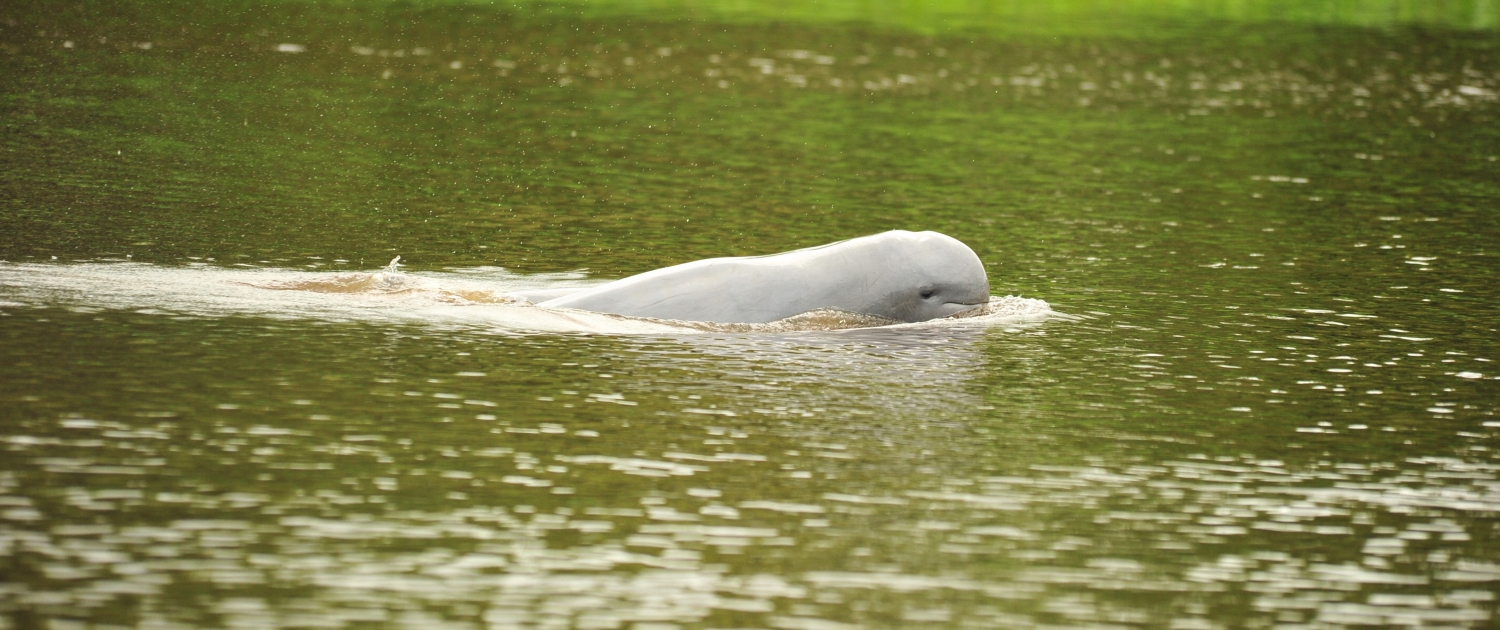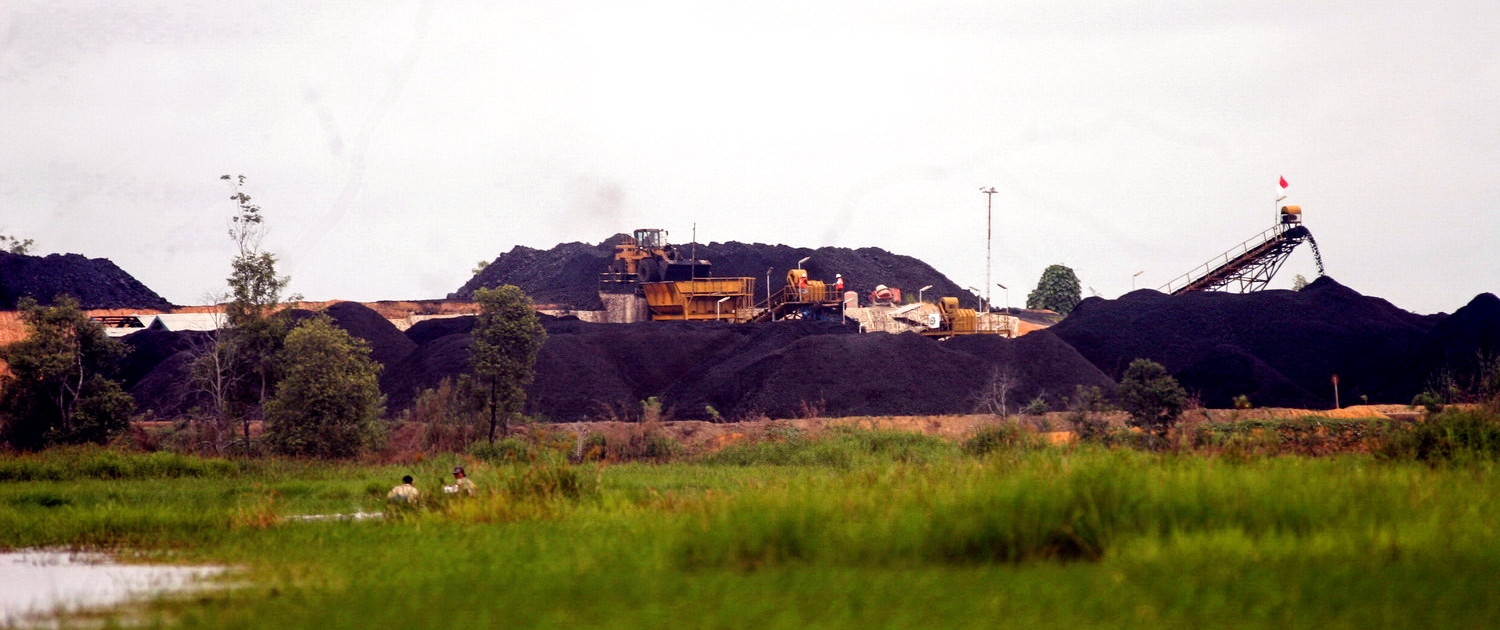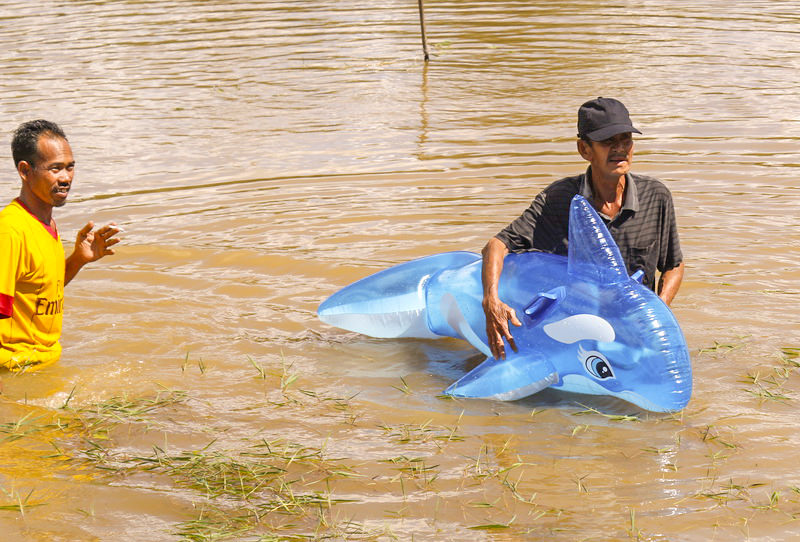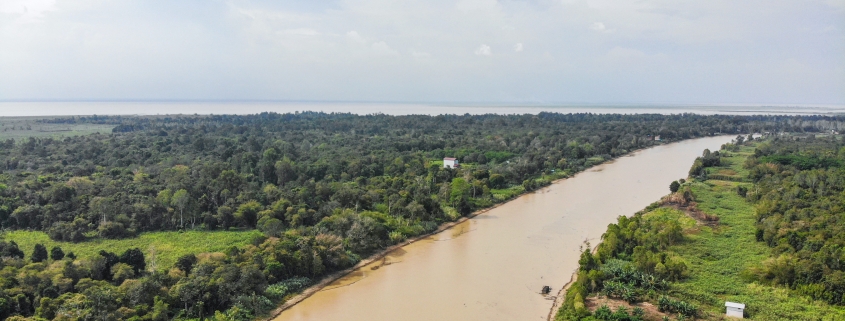New Aquatic Nature Reserve Protects Critically Endangered River Dolphins in Borneo
The Irrawaddy Dolphin is technically an oceanic species, living along the coasts of Asia. But the dolphins also live in three river systems — the Mekong, the Irrawaddy and the Mahakam. And these freshwater populations are under greater threat than the oceanic populations. While the International Union for Conservation of Nature lists the global Irrawaddy Dolphin population as “Endangered,” all three riverine subpopulations are “Critically Endangered.”
One of these, in the Mahakam River of Indonesian Borneo, is now home to only about 80 individual dolphins. Over the past few decades, habitat loss and unsustainable fishing have reduced the local population to near-extinction. That’s why Rainforest Trust began working with the local organization Yayasan Konservasi – Rare Aquatic Species of Indonesia (YK-RASI). Together, they planned to protect habitat in and along the Mahakam River to save this imperiled group of dolphins.

A Critically Endangered Mahakam River Dolphin. Photo courtesy of YK-RASI.
This month, the 106,544-acre Aquatic Nature Reserve of Pesut Habitat, the first of two planned protected areas, has come to fruition. This reserve covers a 58-mile stretch of the Mahakam river home to between 80% and 100% of the Mahakam River dolphin population. But this area has also been prone to fishing techniques such as gillnetting, which can entangle and drown dolphins. In the span of a decade, at least 32 dolphins in the Mahakam died from being trapped in gill nets. Trawling and fishing with electricity or poison have also been detrimental to these dolphins and other riverine species.
But this new aquatic reserve will ban these unsustainable fishing practices and enforce conservation laws. Thirty-one communities with around 40,000 people live along this part of the Mahakam and each community has signed an agreement to establish the protected area. But even before this project began, the Irrawaddy Dolphin, known as the “Pesut Mahakam” in Bahasa Indonesia, was already widely known and beloved. The communities have been working closely with YK-RASI to identify core areas and zone the protected area. Local residents will also be part of patrol teams and report to authorities on reserve status.

Coal mining near a wetland along the Mahakam River. Photo courtesy of YK-RASI.
This stretch of the Mahakam and the surrounding riparian habitat are home to a variety of species besides the dolphins. The Critically Endangered Siamese Crocodile lives here and Critically Endangered Bornean Orangutans often appear in forested areas. Other threatened species include the Endangered Malaysian Giant Turtle, Proboscis Monkey and Storm’s Stork. Scientists estimate that this area has at least 298 bird species, 147 fish species and 27 reptile species.
While the new Aquatic Nature Reserve protects the river, Rainforest Trust and YK-RASI are also working to create a peat swamp conservation area along the river. This 179,808-acre area will prevent illegal logging, oil exploitation and agricultural expansion to further protect the ecosystem. Habitat destruction along the river can lead to sedimentation and pollution, which hurts both the dolphins and the local fishing industry. Together, these two protected areas will create the Essential Ecosystem Middle Mahakam Area. YK-RASI will work closely with the national government to protect and manage these sites.

Two men use an inflatable whale during a dolphin rescue training exercise. Photo courtesy of YK-RASI.
“With only 80 dolphins left in the Mahakam, protecting their riverine habitat was imperative to the future of this charismatic and ecologically important species,” said Mark Gruin, Acting CEO of Rainforest Trust. “It is thrilling that this new reserve will now protect these dolphins and other species as together with our local partners we continue to build a more sustainable future for both people and wildlife in eastern Borneo.”
This project was made possible through generous support of the Conservation Action Fund, with leadership gifts from Gerald and Rosemary Bradley, Darcy Hitchcock and Dale Graham, Luanne Lemmer and Eric Veach, Beverly Spector and Ken Lipson, and Larry Thompson. All gifts were matched by SAVES Challenge.
Header photo: A stretch of the Mahakam River in East Kalimantan, Indonesia. Photo courtesy of YK-RASI.




